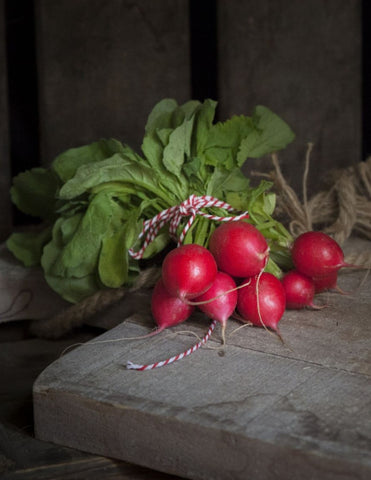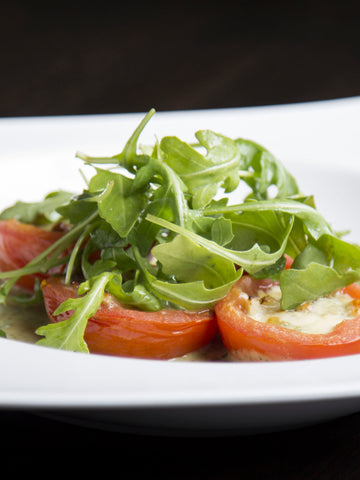There is almost nothing more satisfying than being able to step outside and pick your next meal, fresh from your very own food garden. Whether it’s a salad you enjoy most or a home-grown soup to help you shake off the colder nights, there is something for everyone that can be planted and harvested in a few short weeks!
If you’ve never had the pleasure of hand-picking what you’re eating and knowing exactly where it’s coming from …with some quick and easy planning and preparation, you could be doing just that this season.
Twelve Treats to Try:
Parsley
Parsley is ready for harvesting as soon as the leaves reach a usable size. To prolong the plant's usefulness, pick a few individual leaves from different plants rather than from one individual plant. Flat-leaf parsley has a more robust flavour than the curly leaf kind, but curly parsley has a finer texture that's better in salads.
Broccoli
Broccoli is fast-growing and can be harvested about 60 days after sowing or 30 days if planted from seedlings! Harvest when the florets are tight and dark green, and before its flowers start to open. You can also harvest broccoli leaves, for use in salads, soups and stews.
Beetroot
Beetroot is a relatively quick and easy crop to grow and it’s also most rewarding. When you can start seeing the root, you will have a good idea of its size. The beetroots are ready to harvest when they are approximately the size of a small orange but don’t let them get too large or they won't be as tasty.
Cauliflower
Sow an early-maturing cauliflower variety and a late-maturing variety to extend your harvest. Harvest your cauliflower with care, handling the head gently because it’s quite prone to bruising even though it feels compact and firm. To prolong its overall quality until you’re ready to feast, harvest your cauliflower by cutting it off the main stem along with a few outer leaves still attached.
Leeks
Ideally leeks should be at least two centimetres thick before harvesting and the bigger they get, the more flavour they’ll deliver. That being said, they have an exceptionally long harvesting season since they can happily be eaten while they are still small.
Cabbage
Instead of opting for the big old market cabbages which need about 120 days to mature, go for red cabbage (actually richer in nutritional value) or the baby cabbage varieties which will be ready for harvesting in under two months.
Peas
Highly nutritious, particularly if eaten shortly after being picked, peas have the bonus of putting nitrogen back into the soil. By continually harvesting from your pea plants, you will encourage even more fruiting. Use both hands when picking the pods to avoid damaging the plants.
Radish
Radish is probably the easiest and quickest of all the vegetables to grow; they can be picked in as little as twenty-one days after sowing. They can grow in between slower maturing crops and will add some feisty flavour to an otherwise ordinary salad.

Coriander
Also known as Dayna, coriander is the herb to add a touch of the exotic to your meals. Although mainly used in curries, it works well in salads, sauces, dressings and stews. It’s best grown from seed and could be harvested in a matter of weeks. Pick fresh leaves throughout the year and remember always to remove the flower heads to encourage leaf growth.
Rocket
The secret ingredient in many famous salads, young rocket leaves add a pleasant, pungent, nutty flavour. Try the new “Wild Rocket”, its leaves are smaller than salad Rocket but have more flavour that adds a pleasant, nutty flavour to salads and cheese dishes. Wild Rocket has the decided advantage of re-growing quickly after cutting.
Lettuce
If planted from seedling, leafy types of lettuce can be harvested in just a few weeks. Lettuce is a great vegetable to teach children how to prolong a harvest, by only picking the larger, outer leaves each time, and allowing the inner leaves to grow.
Spinach
Spinach has become the one source of home food that everybody wants. There are different varieties that can be planted to suit your cooking style, from multi-coloured spinach to varieties with different leaf textures. Its tender baby leaves can be harvested young for something different on your salad.
Top Tip:
Look out for our Simply Salads, which is an assortment of different lettuce and edible leaves for salads, all available in one seed pellet.




2 comments
Hi Issac,
As long as the crops are kept well watered through dry spells and have morning sun and afternoon shade, they should grow well. If it is not possible to get afternoon shade, it may be a good idea to have some shade netting to provide cover.
Cauliflower and Broccoli should be grown in the cooler months.
The inviroment i stay is too hot (limpopo)will these crops survive